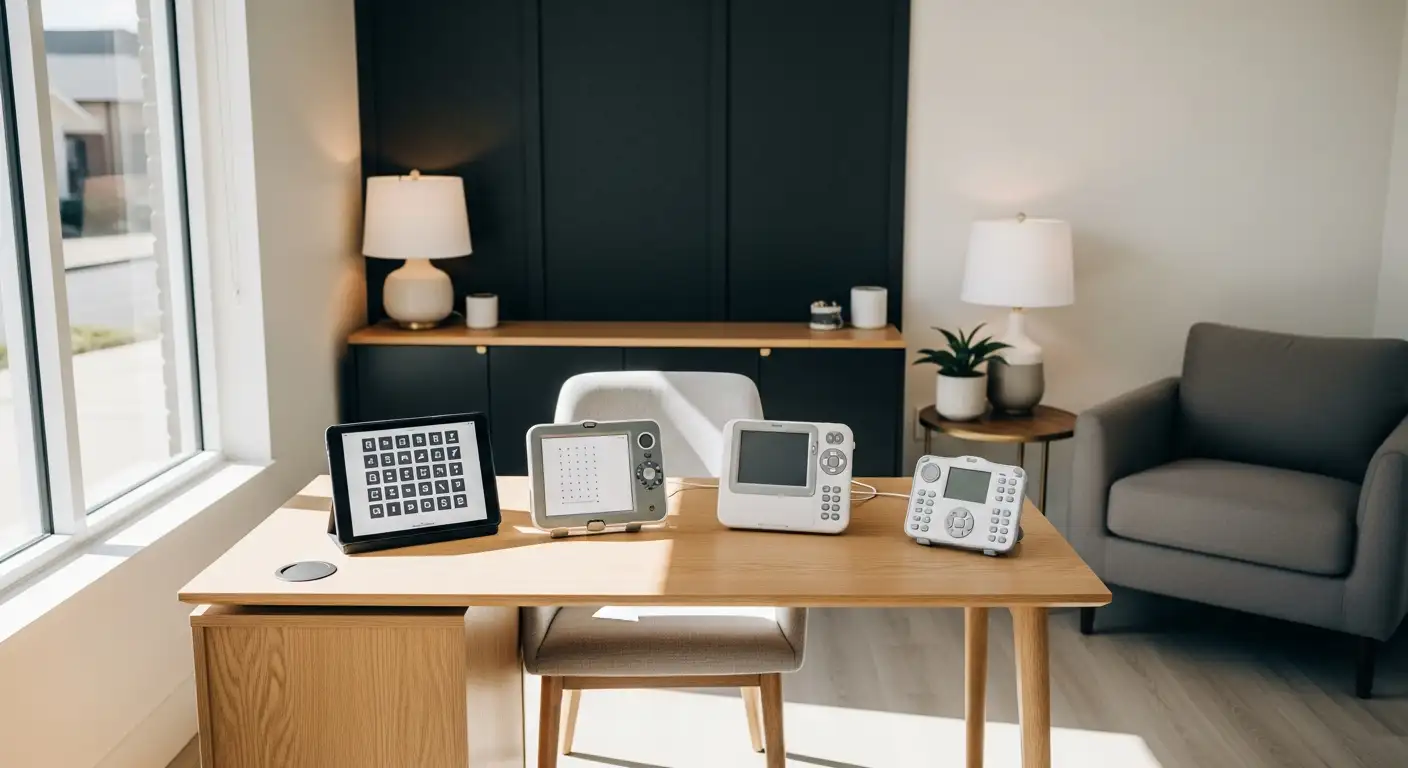How to Incorporate Physical Therapy Exercises at Home


Embracing Physical Therapy at Home
Incorporating physical therapy exercises at home can transform recovery and rehabilitation, making healing more accessible and personalized. A well-designed home exercise program (HEP) enables patients to actively participate in their recovery, leading to improved pain management, functional capacity, and overall health outcomes. This article explores how to effectively integrate physical therapy exercises into your daily home routine, offering practical guidance and strategies to enhance adherence, safety, and success.
Designing a Personalized Home Exercise Program (HEP) for Success

What Is a Home Exercise Program (HEP) and Why Is It Important?
A Home Exercise Program (HEP) is a tailored set of exercises prescribed to patients to address their specific functional deficits and support their rehabilitation goals. HEPs are crucial for recovery and improved health outcomes as they boost pain management, functional capacity, and overall well-being.
How Should HEPs Be Customized?
Customization involves aligning exercises with the individual patient’s abilities, injury, and treatment plan. This approach enhances effectiveness and builds patient confidence. Programs should evolve with the patient’s recovery stage, ensuring exercises adapt progressively to maintain challenge without causing harm.
What Is the Ideal Duration and Structure of Exercise Sessions?
Effective HEP sessions typically last between 15 to 30 minutes, focusing on 2 to 3 exercises per session. This concise structure promotes better patient adherence and avoids overwhelming the individual, facilitating consistent practice.
How Can Exercises Be Linked to Patient-Specific Activities and Goals?
Personalizing exercises to relate directly to a patient’s daily activities and long-term aspirations significantly increases engagement. When patients see how exercises help them achieve meaningful goals or improve everyday tasks, motivation and adherence improve.
What Safety Guidelines and Caveats Should Be Included?
HEPs must clearly include instructions, complemented by visual aids such as photos and videos, to ensure correct exercise execution. Safety caveats—such as avoiding overexertion, recognizing the difference between good (soreness) and bad pain (injury), and stopping exercises if pain arises—are vital to prevent injury and promote safe progression.
Table: Summary of Home Exercise Program Design Elements
| Aspect | Recommendation | Detail |
|---|---|---|
| Session Duration | 15-30 minutes | Keeps sessions manageable and effective |
| Number of Exercises | 2-3 per session | Focuses efforts for better compliance |
| Customization | Tailored to individual needs | Matches exercises to patient ability and rehab goals |
| Patient Engagement | Link exercises to daily life | Connects therapy to meaningful outcomes |
| Instructional Support | Use visual/video aids | Enhances understanding and accurate performance |
| Safety Considerations | Include caveats and pain guidelines | Prevents injury and encourages safe exercise progression |
By integrating these considerations, physical therapists can design personalized HEPs that foster patient adherence, support rehabilitation progress, and ultimately improve functional outcomes.
Enhancing Adherence Through Clear Instructions and Multimedia Support

Use of Visual Aids, Photos, and Videos
Visual aids such as photos and videos are essential components of effective home exercise programs (HEPs). They offer patients a clear demonstration of each exercise, allowing them to visualize proper form and movement patterns. This multimedia support helps reduce confusion and boosts confidence in executing exercises correctly.
Providing Simple, Easy-to-Understand Exercise Movements
Exercises included in HEPs should be simple and easy to follow to promote better adherence. Clear and straightforward movements tailored to the patient's injury and treatment plan avoid overwhelming complexity, which can deter patients from performing exercises consistently.
Importance of Clear Instructions and Demonstrations
Clear verbal and written instructions paired with demonstrations reinforce how exercises should be performed. These instructions often include details such as repetitions, session duration, and any necessary modifications. Effective communication ensures patients understand the purpose and execution of their program.
Role of Multimedia in Improving Exercise Execution and Patient Comprehension
Modern home programs leverage online platforms and apps equipped with multimedia elements—photos, videos, and audio cues—that provide ongoing guidance. This interactive approach supports patient education by enabling users to access demonstrations repeatedly, thereby enhancing their comprehension and performance over time.
Including Do's and Don'ts to Prevent Improper Techniques and Injury
HEPs effectively include caveats outlining do's and don'ts to protect patients from overextension or injury. These safety guidelines educate patients on recognizing when to stop and how to maintain proper posture and form, which further promotes safe and effective rehabilitation at home.
| Aspect | Description | Benefit to Patient |
|---|---|---|
| Visual aids | Photos, videos, and demonstrations | Enhances understanding and correct execution |
| Simple movements | Easy-to-follow exercises customized to patient needs | Encourages adherence and reduces complexity |
| Clear instructions | Written and verbal guidance detailing execution and safety precautions | Builds confidence and prevents injury |
| Multimedia support | Digital tools providing repeated access to exercise demos | Improves engagement and learning |
| Safety guidelines | Do’s and don’ts included in program materials | Protects from overuse and improper techniques |
Leveraging Technology and Digital Tools for Engagement and Tracking

Benefits of Digital Health Tools such as Apps
Digital health applications have transformed home exercise program adherence by providing patients with accessible and interactive platforms. These tools enhance patient engagement by offering convenient access to their prescribed exercises anytime, which helps maintain consistent practice and improve health outcomes.
Features Including Progress Tracking, Reminders, and Communication Facilitation
Many apps include progress tracking features that allow patients to monitor improvements and milestones, which boosts motivation and self-efficacy. Automated reminders encourage regular exercise sessions, while built-in communication platforms facilitate ongoing dialogue between patients and therapists, allowing timely adjustments and support.
Use of Online Programs with Multimedia Support
Online exercise programs often incorporate multimedia aids such as photos, videos, and audio instructions. This comprehensive approach improves comprehension and correct execution of exercises, making it easier for patients to perform movements safely and effectively at home.
How Technology Fosters Accountability and Ongoing Patient Engagement
By integrating real-time feedback and interactive elements, technology fosters a sense of accountability. Patients can receive instant encouragement and know when exercises have been completed correctly, which enhances their confidence and commitment to long-term rehabilitation goals.
Cloud-Based Tools Empowering Patients in Home Therapy
Cloud-based platforms provide secure storage and sharing of exercise plans and progress data. This accessibility benefits both patients and therapists by enabling personalized, up-to-date program modifications and seamless communication, thereby promoting adherence and maximizing therapeutic benefits.
Progressive Modification and Safe Exercise Practices at Home

How Are Exercises Adjusted to Match Patient Recovery Stages and Abilities?
Home exercise programs must evolve with the patient's recovery progress and physical capabilities. Exercises are tailored to individual needs, and modifications happen gradually to ensure safety and effectiveness. This approach helps in maintaining engagement and appropriate challenge levels, avoiding over-exertion or injury.
What Types of Movements Are Commonly Used in Home Exercise Programs?
Therapists incorporate several types of movements depending on patient ability:
- Range of Motion (ROM): Passive or active movements to maintain joint flexibility.
- Active Range of Motion (AROM): The patient moves the limb independently.
- Active Assistive Range of Motion (AAROM): Assistance supports the patient's active movement.
- Passive Range of Motion (PROM): The therapist or an aid moves the limb without patient effort.
These types allow customization and progressive adaptation throughout recovery.
Why Is Avoiding High-Impact and High-Intensity Exercises Important?
Patients, especially those with neuromuscular conditions or recovering from injury, must avoid exercises that place excessive strain on their bodies. High-impact or intense workouts risk worsening symptoms, causing pain or fatigue, and may reduce a patient's ability to perform daily activities.
How Can Patients Recognize and Differentiate Between Good and Bad Pain?
Understanding pain signals is crucial for safety:
- Good pain refers to normal muscle soreness or fatigue from exercise.
- Bad pain includes sharp, worsening, or persistent pain indicating injury or harmful stress.
Patients are advised to stop exercising immediately if they experience bad pain and consult their therapist.
What Strategies Support Safe Exercise Execution and When Should Patients Stop?
Clear instructions with visual aids help ensure correct form, while modifications prevent overextending muscles or joints. Patients should regularly communicate with therapists, report discomfort, and use appropriate posture. Ceasing exercise upon pain onset or unexpected symptoms protects patients and promotes recovery.
| Aspect | Description | Purpose |
|---|---|---|
| Progressive Modification | Adjusting exercises based on recovery and ability | Ensures safety and continued improvement |
| Movement Types | ROM, AROM, AAROM, PROM | Tailors exercise to patient capability |
| Avoidance of High-Impact Exercises | Skipping high-intensity, high-impact exercises | Prevents exacerbation and fatigue |
| Pain Recognition | Differentiating good soreness vs. bad pain | Guides safe practice and protects from injury |
| Communication and Instruction | Providing clear guidance and feedback | Supports correct execution and timely adaptations |
Incorporating Therapeutic Exercises for Neuromuscular and Chronic Conditions
What is the Role of Physical and Occupational Therapy Exercises for Conditions Like ALS?
Physical therapy (PT) and occupational therapy (OT) play vital roles in managing neuromuscular disorders such as amyotrophic lateral sclerosis (ALS). These therapies aim to maintain muscle function, prevent complications, and improve quality of life by addressing specific physical limitations. PT focuses on exercises that help preserve strength and mobility, while OT assists in regaining skills necessary for daily living.
Why Focus on Maintaining Range of Motion and Muscle Function?
In conditions like ALS, the objective is not to build muscle bulk but to maintain existing muscle function and prevent range of motion (ROM) limitations. This approach helps maximize patients’ functional capacity and endurance without causing overexertion which could sap energy needed for daily activities.
What Are Examples of Therapeutic Exercises?
- Stretching and Range of Motion (ROM) Exercises: These include active range of motion (AROM), active assistive range of motion (AAROM), and passive range of motion (PROM) tailored to the patient’s ability.
- Balance Exercises: Such as single-leg stance, foot taps, narrow stance reach, and ankle sways to improve stability.
- Neck Exercises: Side bends, rotations, and cervical nods help maintain neck flexibility.
- Arm Exercises: Scapular movements, shoulder flexion, external rotation, as well as elbow, forearm, wrist, and finger movements, offered in active, assisted, or passive modes.
- Leg Exercises: Including knee to chest stretches, hip stretches, low back rotations, knee extensions, and ankle circles.
How Are Programs Adjusted as Disease or Condition Progresses?
Exercise programs must be continuously customized to reflect the patient’s changing abilities. Regular consultation with healthcare providers allows for safe modification to intensity and type of exercises, ensuring they remain suitable and do not promote injury or fatigue.
How Do Positioning Techniques Like Wheelchair Tilt and Recline Support Therapy?
Proper positioning in a wheelchair, with options for tilt and recline, is crucial to prevent complications such as tightness, pain, swelling, and pressure injuries. It also facilitates performing exercises, managing edema, and maintaining overall comfort and function.
These targeted therapeutic exercises and supportive positioning strategies are essential components of home exercise programs designed for individuals with neuromuscular and chronic conditions, promoting independence and better health outcomes.
Building Motivation, Confidence, and Self-Efficacy in Home Therapy

Importance of setting realistic, manageable goals
Setting achievable, manageable goals is essential to keeping patients motivated and preventing overwhelm in home exercise programs (HEPs). Working closely with a physical therapist to focus on a few exercises at a time helps patients see measurable progress, fostering commitment and adherence.
Linking exercises to personal motivations for treatment
Connecting exercises directly to a patient's personal goals—such as returning to specific activities or improving daily function—strengthens motivation. Reminding patients of their initial reasons for treatment can help maintain engagement and a sense of purpose.
Providing real-time feedback and celebrating progress
Incorporating confidence-building measures, like real-time feedback through digital health tools or therapist communication, encourages patients by acknowledging their achievements. Celebrating small milestones boosts self-efficacy and encourages continued effort.
Enhancing patient education to boost confidence and consistency
Clear instructions, supported by visual aids, videos, and demonstrations, improve understanding and correct execution of exercises. This education empowers patients, increases confidence, and promotes consistency in performing their HEP.
Collaborative planning and regular communication with therapists
Engaging patients in collaborative planning ensures exercises are tailored to their changing needs and preferences. Regular therapist communication provides a platform to discuss challenges, modify programs safely, and reinforce motivation.
These strategies collectively foster independence and improve outcomes, making home therapy both effective and sustainable.
Integrating Home Physical Therapy Within Professional Care Frameworks
Role of Licensed Professionals in Prescribing and Monitoring HEPs
Home exercise programs (HEPs) must be prescribed and overseen by licensed healthcare professionals. This ensures that exercises are safe, tailored properly, and adaptable as the patient's condition evolves. Licensed physical therapists, occupational therapists, or their supervised assistants design and modify these programs, ensuring alignment with clinical standards.
Necessity of Initial Evaluation, Diagnosis, and Discharge Planning
An effective home physical therapy plan begins with a thorough initial evaluation and diagnosis. This assessment determines the patient's functional status and rehabilitation goals. The treatment plan includes clearly defined techniques and objectives with a structured discharge plan, marking measurable improvements and readiness to conclude therapy.
Criteria Defining Appropriateness of Therapy and Coverage Guidelines
Therapy is deemed appropriate when it targets the restoration or establishment of lost functions caused by disease, injury, or surgery, with prospects for measurable improvement and sustainable outcomes. Coverage for home-based therapy is contingent upon meeting criteria such as homebound status, indicating patients who cannot leave their home without considerable effort or assistance.
Avoiding Therapy Aimed Solely at Maintenance or General Health
Insurance and clinical guidelines typically exclude coverage for therapy intended exclusively for maintenance, general health, or social functioning. The focus is on rehabilitative care with clear therapeutic goals, excluding interventions without expectation of functional improvement.
Importance of Open Communication About Pain, Difficulties, and Environmental Constraints
Open dialogue between patients and therapists is crucial. Patients should promptly report pain—distinguishing between normal soreness and injury-related pain—as well as any exercise difficulties or environmental barriers. This communication allows timely modification of HEPs, thus enhancing safety, adherence, and overall therapeutic success.
Empower Your Recovery Journey at Home
Successfully incorporating physical therapy exercises at home requires thoughtful planning, clear guidance, and ongoing support. By personalizing your program, utilizing multimedia and technology, and pacing your progression safely, you can enhance adherence and outcomes. Remember to maintain open communication with your healthcare providers and celebrate every milestone on your recovery journey. With determination and the right resources, home-based physical therapy can become a cornerstone of your overall health and well-being.
References
Recent articles

The Benefits of ABA Therapy for Sibling Relationships and Family Bonds
Strengthening Family Ties Through Applied Behavior Analysis

How Speech Therapy Assists with Improving Verbal and Nonverbal Communication
Unlocking Communication Potential: The Role of Speech Therapy

Supporting Autism During Transitions
Strategies and Therapies to Navigate Transitions for Children with Autism

Low-Functioning Autism
Understanding Support and Therapies for Autism Spectrum Disorder Level 3

How Speech Devices Enhance Communication for Nonverbal Children
Transforming Communication: The Role of Speech Devices for Nonverbal Children

TEACCH Method For Autism
Comprehensive Therapeutic Approaches for Autism Spectrum Disorder


